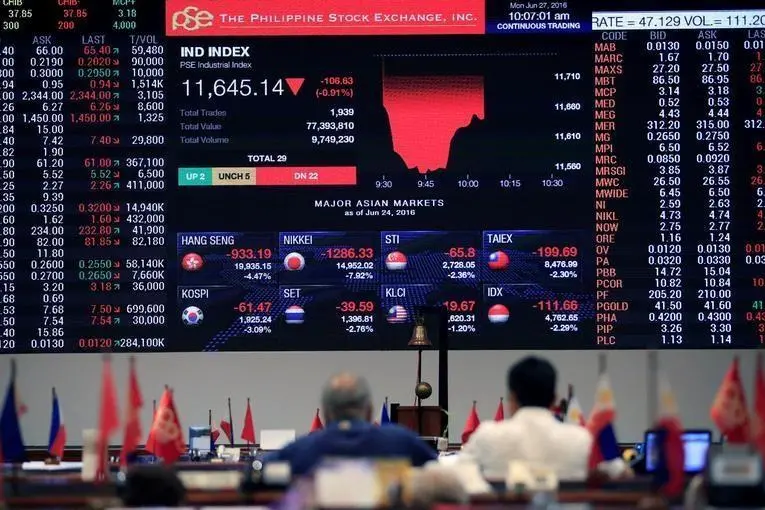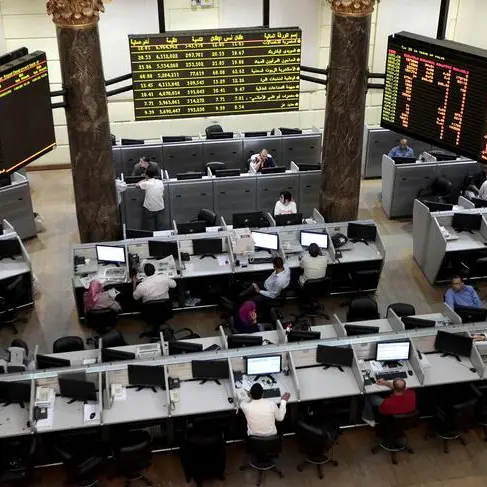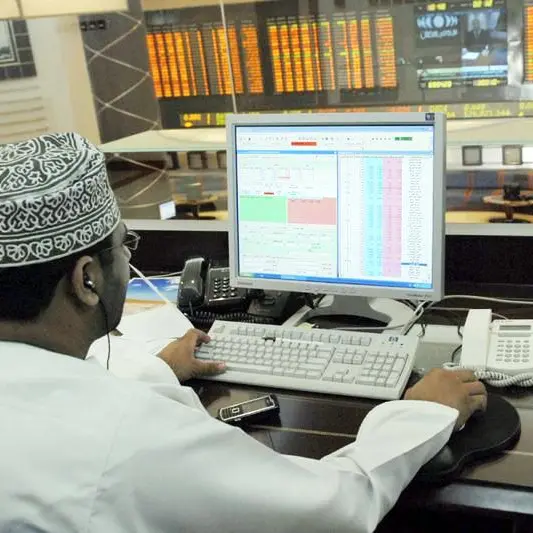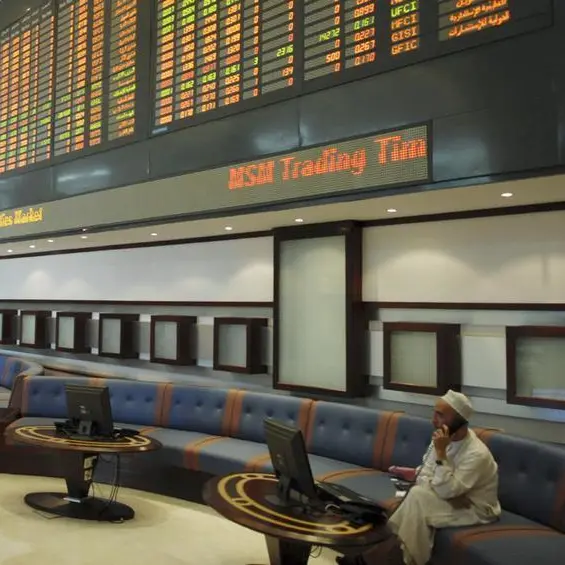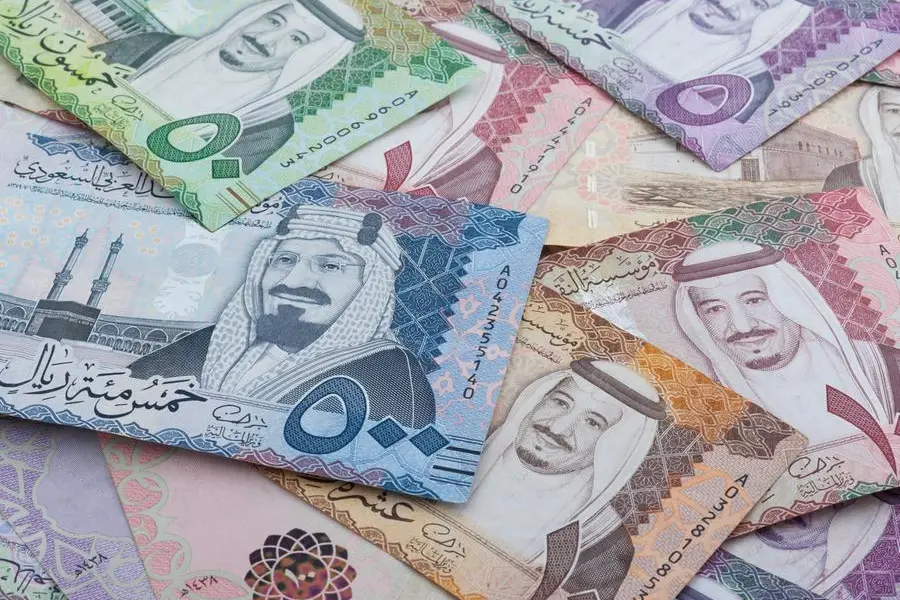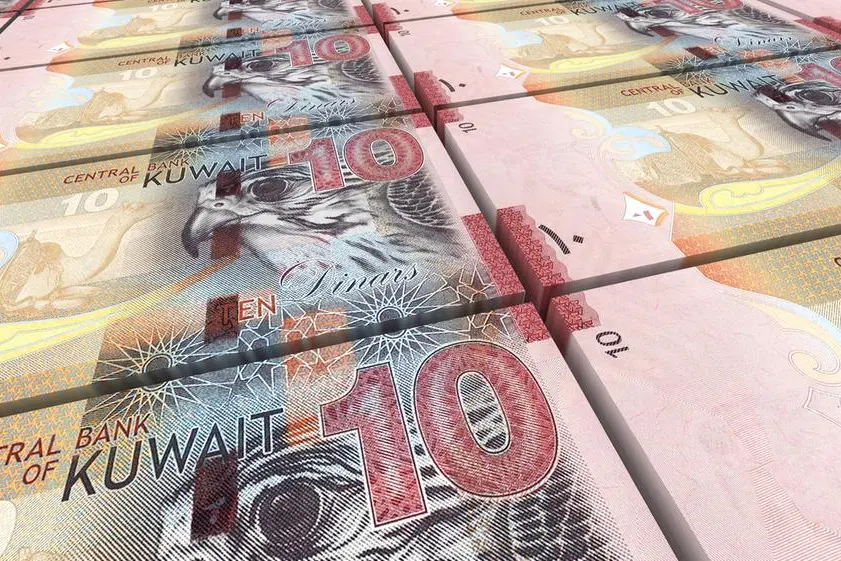PHOTO
A gauge of global equity markets closed in on a record high on Friday in anticipation of central bank interest rate cuts and strong corporate earnings, while the dollar rose despite signs of slowing U.S. economic growth.
European shares were set to post their biggest weekly gain since late January, with the pan-regional STOXX 600 index headed to its sixth straight session of gains, while the Dow industrials were on track to register eight daily advances in a row as early gains on Wall Street turned mixed.
The strong performance on either side of the Atlantic pushed MSCI's all-country world index toward a record closing high.
Driving Wall Street higher are better-than-expected U.S. corporate results and the potential for the Federal Reserve to cut interest rates this year, said Thomas Hayes, chairman and managing member at Great Hill Capital LLC in New York.
"Higher jobless claims than expected yesterday put the Fed on its back foot. The Fed not only is watching inflation, but if they saw some weakening in the jobs market that would potentially be cause to move ahead with cuts," he said.
"There's still the likelihood we're going to see one or two this year."
MSCI's gauge of stocks across the globe gained 0.28%, while Europe's STOXX 600 index rose 0.73%. The Dow Jones Industrial Average rose 0.18%, the S&P 500 gained 0.07% and the Nasdaq Composite dropped 0.09%.
The dollar pared initial declines and turned modestly higher as investors assessed a reading on U.S. consumer sentiment and sifted through a flurry of comments from Fed officials.
The University of Michigan's preliminary reading of consumer sentiment came in at 67.4 for May, a six-month low and below the 76.0 estimate of economists polled by Reuters. In addition, the one-year inflation expectation climbed to 3.5% from 3.2%.
"The U.S. exceptionalism trade is fading. We did see a decline yesterday based on the higher-than-expected rise in jobless claims," Karl Schamotta, chief market strategist at Corpay in Toronto.
"The underlying trend here does it does look as if the dollar's essentially peaking here and then it might decline."
The dollar index rose 0.11%, with the euro down 0.13% to $1.0767 as the yen headed toward its fourth decline of the week, weakening 0.26% to 155.86 per dollar.
The pound was poised for a modest weekly loss after the Bank of England (BoE) on Thursday paved the way for the start of rate cuts as soon as next month and data showed the British economy exited a mild recession in the first quarter of this year.
INFLATION AHEAD
Markets await both next week's producer price index and the consumer price index for signs that U.S. inflation has resumed its downward trend towards the Fed's 2% target rate.
Hotter-than-expected inflation reports last month had quashed any lingering expectations of near-term U.S. rate cuts. Markets are now fully pricing in a cut only in November though there is still a chance of the Fed moving in September.
In contrast, markets now imply a 50-50 chance of a BoE cut in June and are almost fully priced for August. They also imply an 88% chance the European Central Bank will ease in June.
BOE Governor Andrew Bailey said there could be more reductions than investors expect, the latest sign of the growing divergence between the Europe and U.S. rate outlooks.
Sterling slid 0.10% at $1.2512, having touched a more than two-week low of $1.2446 on Thursday.
Traders currently anticipate roughly 45 basis points of cuts this year from the Fed. In comparison, traders are pricing in 58 bps of easing from the BoE this year, while anticipating 70 bps of cuts from the ECB.
Treasury yields rose with no major catalysts to drive direction as traders waited on key inflation data for April next week to guide expectations of Federal Reserve policy.
Yields hit one-month lows last week after a softer-than-expected employment report for April re-ignited bets that the U.S. central bank will make two 25 basis point interest rate cuts this year.
The two-year Treasury yield, which reflects interest rate expectations, rose 4.8 basis points to 4.855%, while the yield on the benchmark 10-year note was up 4.9 basis points at 4.498%.
Global benchmark Brent hovered above $84 a barrel after data this week signaled growing demand in the U.S. and China, the world's two largest crude consumers, while festering conflict in the Middle East also provided support.
U.S. crude recently fell 0.04% to $79.23 per barrel and Brent was at $83.73, down 0.18% on the day.
Spot gold added 0.8% to $2,363.97 an ounce.
(Reporting by Herbert Lash, additional reporting by Amanda Cooper and Ankur Banerjee; Editing by Ros Russell, Kirsten Donovan and Nick Zieminski)
